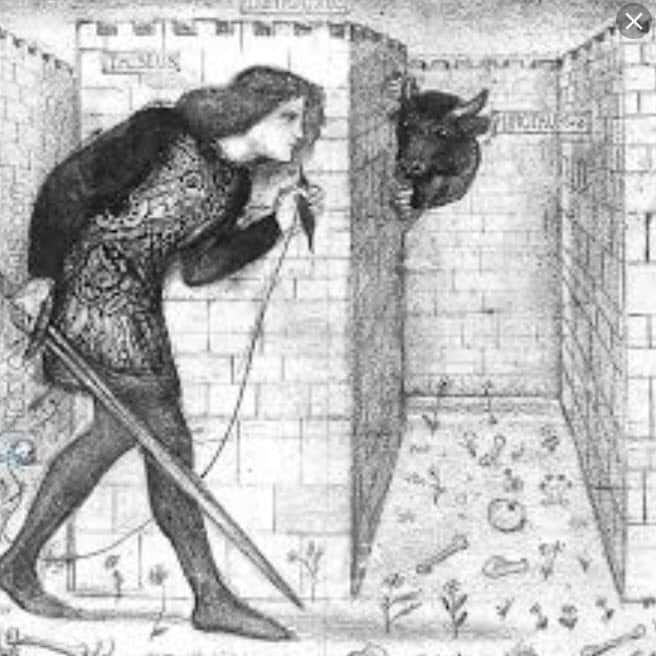
Guest Blogger and long-time Council friend, Bob W. presents Part 44 of a series dealing with Alcoholism and Addiction from a Mystical, Mythological Perspective, reflecting Bob’s scholarly work as a Ph.D. in mythological studies.
There is an ancient mythological story about King Minos of Crete who builds a massive, intricate Labyrinth to contain a creature named the Minotaur, half man and half bull, the issue of his wife who mistakenly mates with a bull in a ruse of the god Poseidon. The Minotaur is a monster that only feeds on humans and Minos has exacted a toll on the city of Athens to send him young girls and boys on a regular basis as food for the Minotaur. Theseus is one of those and, while on Crete waiting to be fed to the Minotaur, he meets Ariadne, the daughter of Minos, who falls in love with him. She gives Theseus a sword and a ball of twine, the twine to be used by Theseus to tie to the opening of the Labyrinth and let unravel as he and his fellow victims are led to the center to be eaten by the Minotaur. Once there Theseus uses the sword to kill the Minotaur in a monstrous battle, and then escapes using the twine, “Ariadne’s Thread,” to find his way back to the opening with his fellows.
As we have seen, many of these mythological stories have wonderful analogies for those of us on the Journey to Recovery from the ravages of alcoholism and drug addiction. The Minotaur, a monster of ugly proportions, could clearly represent our disease, one which was spawned by early life mishaps and one which consumed our loved ones as we trampled through our life in the disease. The act of conquering the disease is the first step, but then we must use the tools, carefully and doggedly working the steps, using the steps as “Ariadne’s Thread,” to find our way to a life of freedom and service. Each of these steps provides us with a wonderful sense of progress in escaping the dread of our lives in the disease.
My wish is that it be universal…that all of us be Theseus…that we find Ariadne’s Thread as the lifelong avenue to a sober life in the Sunshine of the Spirit.

 Guest Blogger and long-time Council friend, Bob W. presents Part 43 of a series dealing with Alcoholism and Addiction from a Mystical, Mythological Perspective, reflecting Bob’s scholarly work as a Ph.D. in mythological studies.
Guest Blogger and long-time Council friend, Bob W. presents Part 43 of a series dealing with Alcoholism and Addiction from a Mystical, Mythological Perspective, reflecting Bob’s scholarly work as a Ph.D. in mythological studies.